If you’ve been suffering from chronic lower back pain, there’s about a chance that it is caused by SI joint dysfunction. (1) Here are easy, soothing stretches you can do anywhere to release the pain.
The SI joint – also known as the sacroiliac joint – connects the sacrum to either the right or the left iliac bones, which are the large bones that form your pelvis. These joints support the weight of your entire body when you are upright, help you to balance as you walk, and absorb shock to the spine. For the most part, they are immobile and allow for just a few degrees of rotation.
Women are eight to ten times more likely to have sacroiliac joint pain than men, due to hormonal and structural differences. (2)
Suffering from a sore neck, back and shoulders? Get our mobility guide to ease pain and soreness.
Get The FREE Mobility Guide To Fix Your Pain Today!
Causes of SI Joint Pain
Pregnancy
Hormonal changes during pregnancy can loosen vital ligaments, leading to lower back pain. A study showed that 36 percent of women with full-term normal delivery, and 23 percent of women with C-sections, experienced SI joint dysfunction. While the prevalence of SI joint dysfunction is slightly less postpartum (26 percent), the severity is stronger, because new mothers typically ignore their pain while caring for a newborn. (3)
During pregnancy, women typically gain 20-40 lbs which shifts the body’s center of gravity. At the same time, the abdominal muscles stretch, which causes women to lose their ability to maintain proper posture. The hormone relaxin is also released ten times the normal amount to loosen the supporting structures of the SI joint in preparation for birth, which can set the stage for SI joint dysfunction. (4)
Aging
As we age, it is possible to develop arthritis and other diseases that cause degeneration of the SI joint which leads to “hypomobility” or lack of mobility in the joint. A study showed that 23 percent of participants experienced degenerative changes over a three year period, 68 percent of them being women. (5)
Injury
SI joint dysfunction is also sometimes referred to as “sacroiliac joint instability” or “hypermobility” due to a lack of support from the once-strong ligaments. The weakened, injured, or sprained ligaments can stem from a torsion or high-impact injury, like a hard fall. (6) Over half of patients diagnosed with SI joint pain had some sort of traumatic injury. (7)
Abnormal Gait
Some people are born with abnormal gait qualities, like lumbar lordosis or a pelvic tilt, that can lead to SI joint dysfunction, but modern day societal habits such as wearing high heels and constant sitting are the cause of most issues today. We naturally have a small degree of anterior pelvic tilt and lumbar lordosis for proper shock absorption in the spine, but both high heels and sitting can lead to an unhealthy amount of both of these. (8) As they increase, there is increased compression in the SI joint that can lead to pain and dysfunction.
Relieve Lower Back Pain with These 7 Stretches
Specific stretches and exercises have been shown to improve and even eliminate SI joint pain and injury by increasing flexibility, balance, stretch, and stability. (9) Practice this sequence once to twice a day for maximum results. All you need is a mat, a yoga block or pillow, and a wall.
Double Knee Hug | 30 sec

This stretch relaxes the muscles of the lower back, glutes, and hips to relieve tension on the SI joint.
- Lie down on your back with your legs out long.
- Lift both of your knees to your chest.
- Hug your knees to your chest with your arms and hold for 30 seconds.
Lower Trunk Rotation | 10 sec per side
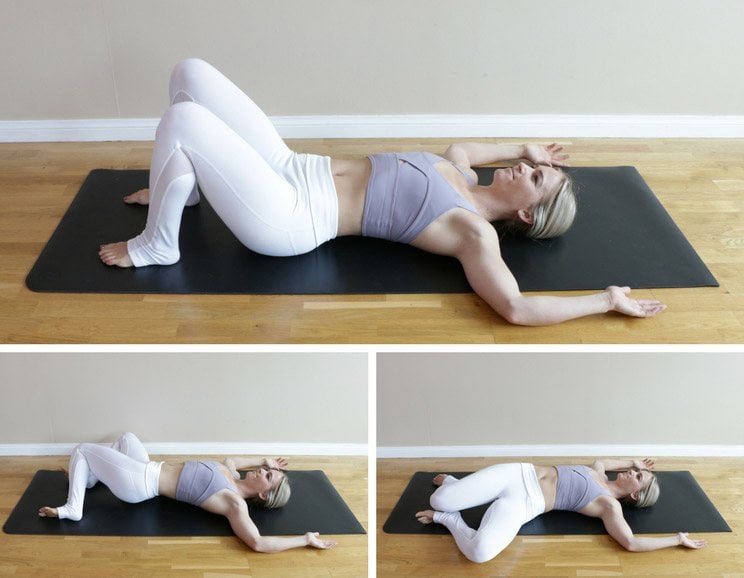
This stretch brings movement and flexibility into the hips and lower back, helping to relieve pressure on the SI joints.
- Lie on your back with your knees bent and your feet hips-width distance on the floor.
- Cactus your arms so that your elbows are in line with your shoulders and engage your abs.
- Inhale, then exhale to lower your knees towards the right side of your mat, twisting your torso. Hold for 10 seconds.
- Inhale your knees back to the center, then exhale to lower them towards the left side of your mat. Hold for 10 seconds.
- Repeat 5x on each side.
Bridge | 30 sec

This stretch relieves tension in the hip flexors while strengthening the muscles around the SI joint like the glutes, outer hips, and lower back.
- Lie on your back with your knees bent and your feet hips-width distance on the floor. Reach your arms down by your sides with your palms facing down.
- Engage your abs and inhale to lift your hips up towards the ceiling to come into a bridge.
- Engage your glutes and inner thighs. Hold for 30 seconds, then slowly release one vertebra at a time.
Supine Figure 4 | 30 sec per side
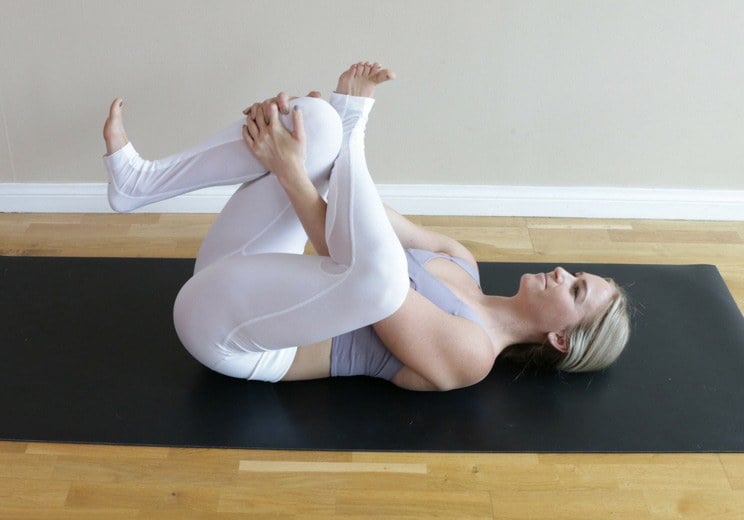
This stretch relieves tension in the piriformis which when tight can aggravate the SI joint.
- Lie on your back with your knees bent and your feet hips-width distance on the floor.
- Place your right ankle above your left knee, on the thigh. Loop your right hand between your legs and interlace your hands behind your left thigh.
- Keep your head and shoulders on the ground as you hug your leg towards you. Feel the stretch through your outer right hip. Hold for 30 seconds, then switch sides.
Cow Face Legs | 30 sec per side
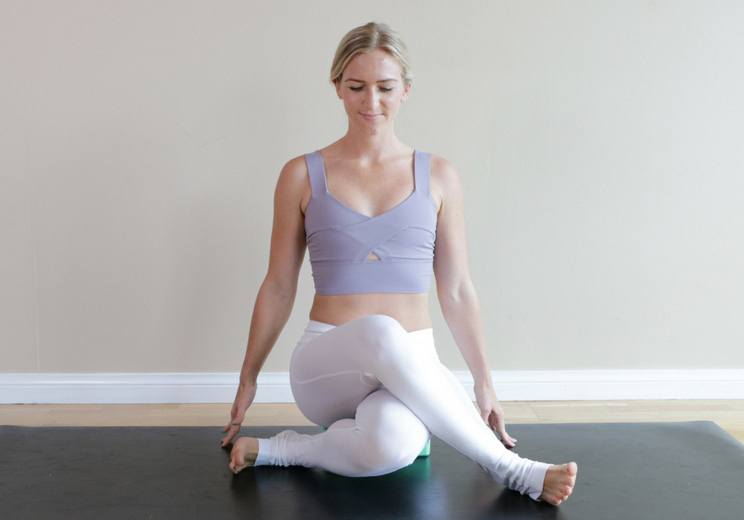
This stretch relieves tension in the glutes, hips, and lower back to release tightness in the SI joint.
- Start in a seated position. Bend your left knee in towards your body, then bend your right knee and place it over your left knee.
- Try to have your knees perfectly stacked, one on top of the other, and keep your feet flexed to protect your knees. Both of your sit bones should be pressing into the ground. If this is not possible, then prop your hips up onto a yoga block or pillow to allow equal weight on both sit bones.
- Place your fingertips behind you and sit up nice and tall, taking deep, slow breaths.
- If you feel like you want to go a little deeper, you can walk your hands out in front of you, making sure to keep your sit bones pressing down.
- Hold for 30 seconds, then switch sides.
Child’s Pose | 30 sec
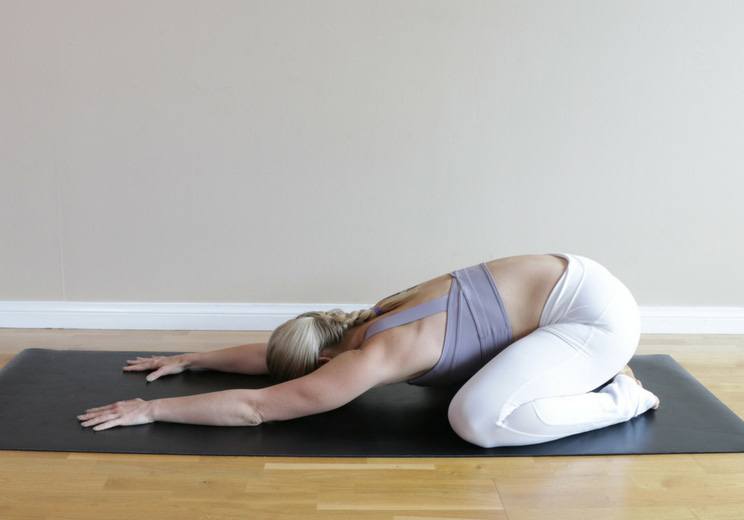
This classic yoga pose relieves tension in the SI joint by opening up the glutes, hips, and lower back.
- Start on your hands and knees in a tabletop position. Bring your big toes together and take your knees out wide.
- Slowly sit your hips back on your heels. Then, walk your hands forward until you can lower your forehead to the ground.
- Continue walking your hands out in front of you until your arms are straight but your shoulders are relaxed away from your ears. Hold for 30-60 seconds.
TFL Wall Stretch | 30 sec per side
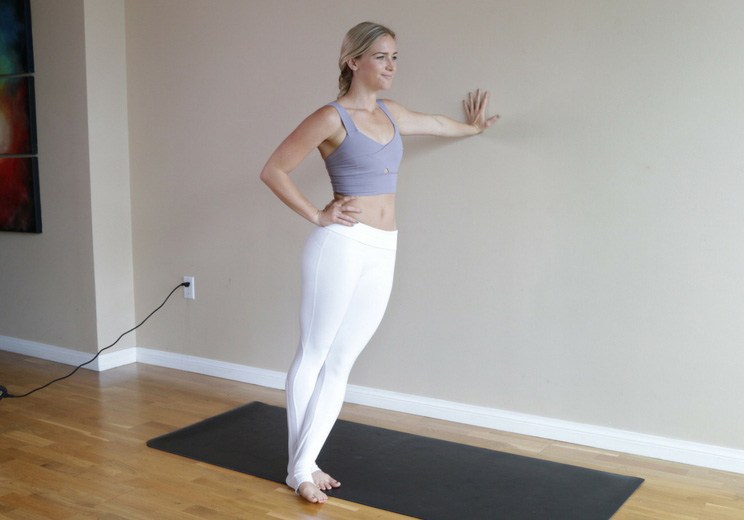
The Tensor Fascia Latae (TFL) is a muscle of the outer thigh that attaches to the IT band and acts as a hip stabilizer, assisting in keeping the balance of the pelvis while standing, walking, or running. (10) When tight, it can cause a pelvic shift, leading to SI joint pain.
- Stand slightly more than an arm’s distance from a wall, with your right side facing it.
- Cross your right ankle in front of your left. Then, lean your right hand into the wall, keeping your arm straight. Place your left hand on your hip.
- Keeping your legs straight and your hips square, move your right hip toward the wall until you feel a stretch in your right outer hip. Hold for 30 seconds, then switch sides.

(Your Next Workout: 6 Yin Yoga Poses to Release Joint Pain)


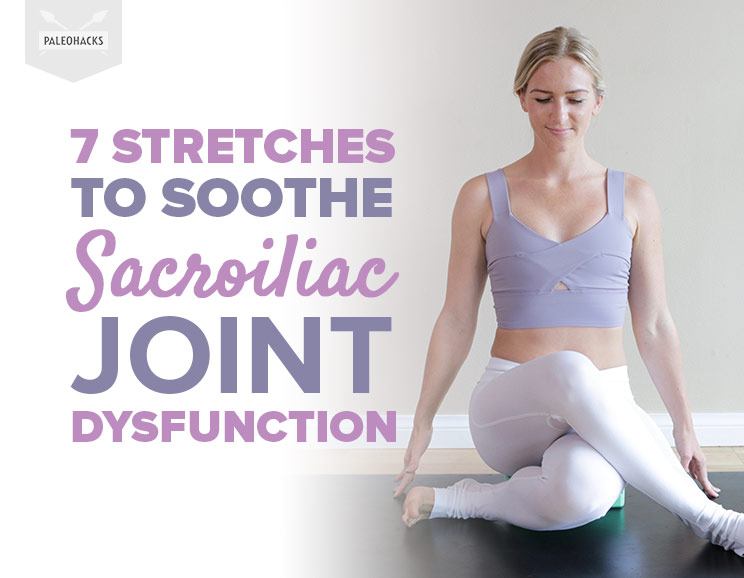

 Dairy-Free and Nut-Free Cauliflower Cheese (Slice It, Grate It, Melt It!)
Dairy-Free and Nut-Free Cauliflower Cheese (Slice It, Grate It, Melt It!)
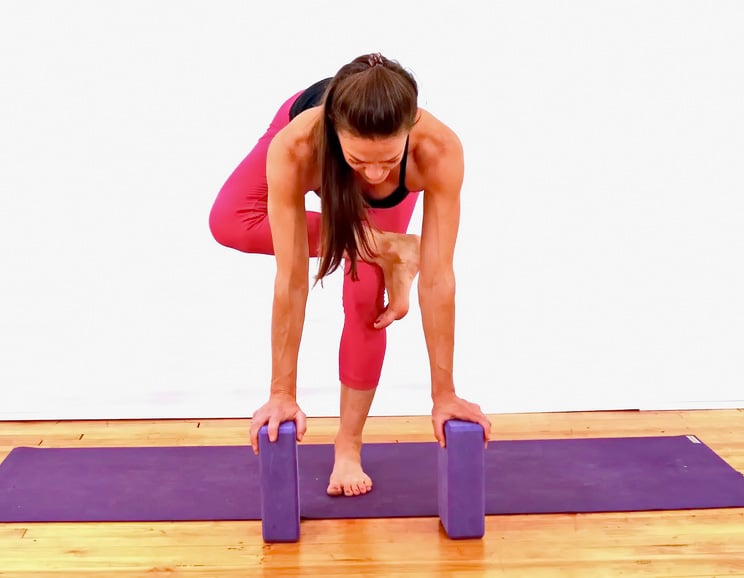
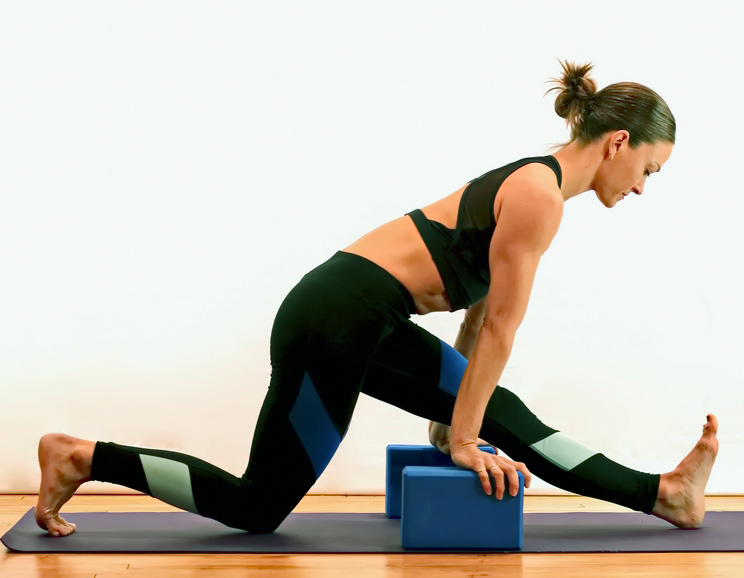
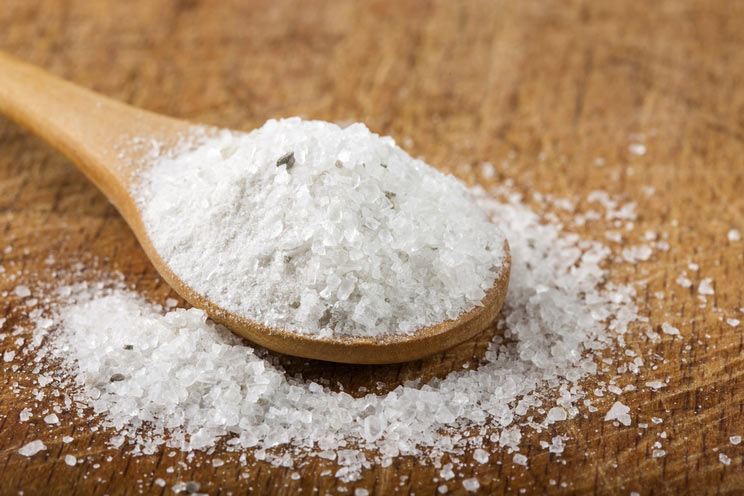
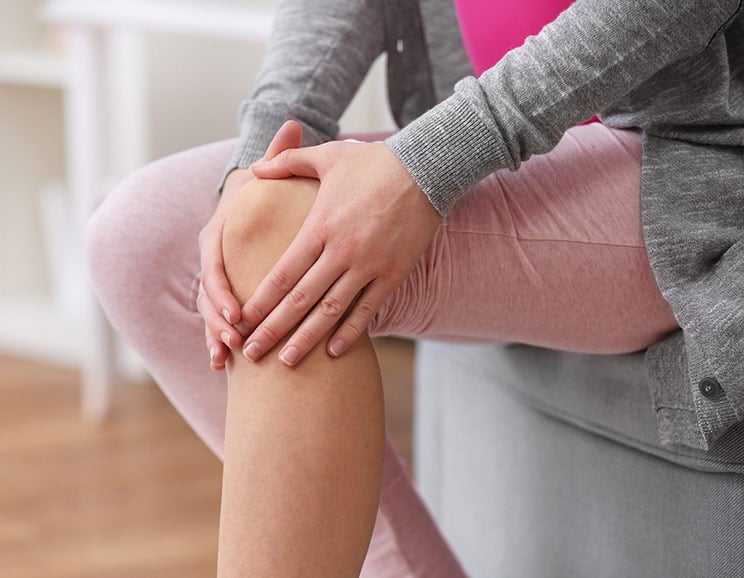
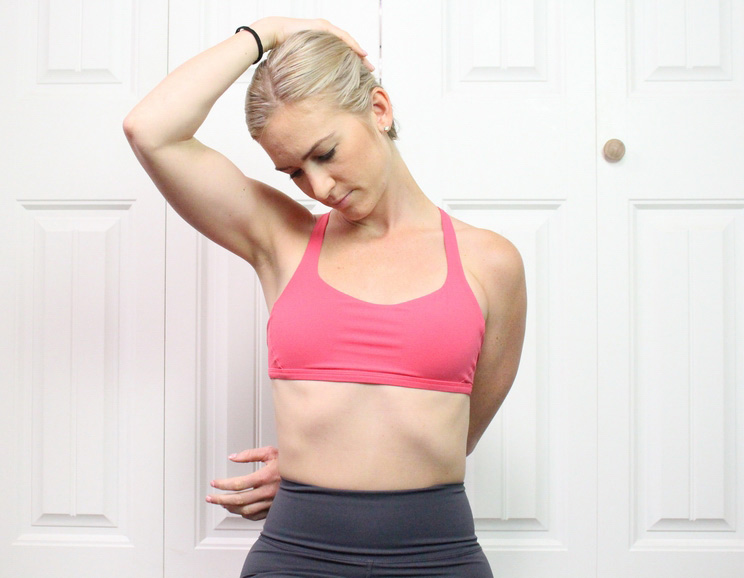

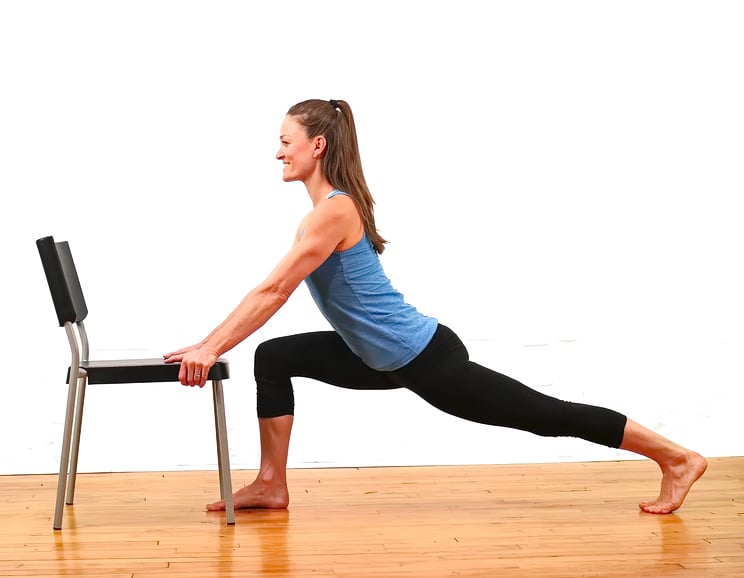
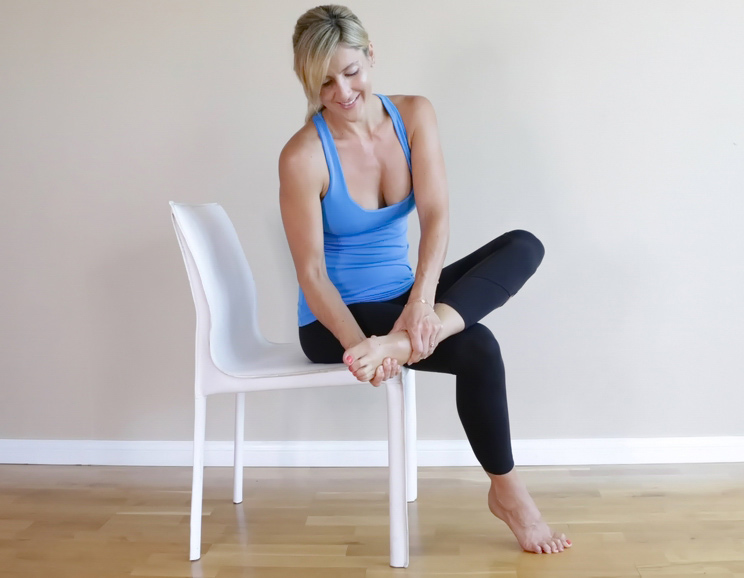
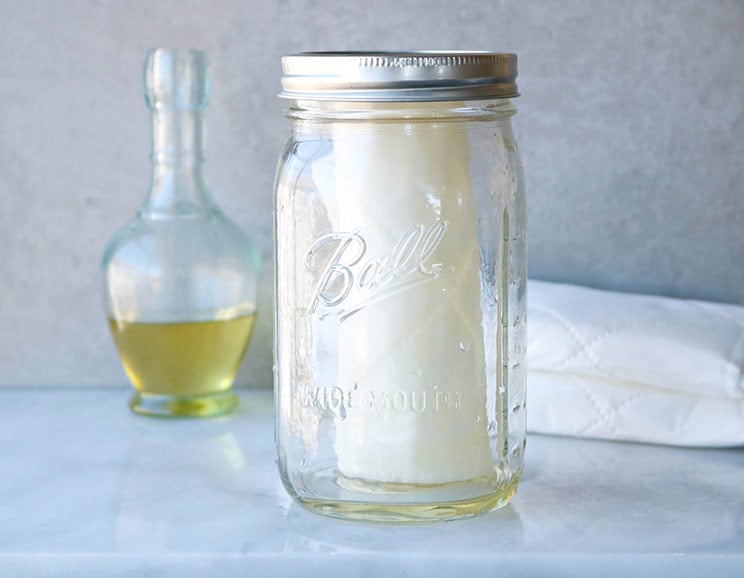
Show Comments